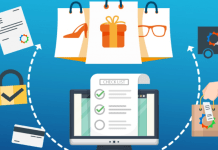Recently a new malware is going viral on Facebook’s Web, Android and iOS’ messenger application. If you get a questionable Facebook message from one of your closest friends, be careful before you click. A new scam tidying the social network makes users to send out personalised hoax messages to their friends that cover a malware-driven link.
Each message includes the recipient’s name, the word ‘video’ and a shocked emoji, followed by the link.

Users who click on the link are addressed to different malicious sites depending on their browser.
-A major tech blog called Bleeping Computer reports.
Google Chrome users who click on the link are taken to a fake YouTube channel that is drawn with adware. Firefox users on other hand are taken to a page offering a fake Flash Player installer, which infects the user’s PC with adware.
IT security researcher David Jacoby wrote in a blog post:
The link points to a Google Doc. The document has already taken a picture from the victim’s Facebook page and created a dynamic landing page which looks like a playable movie.
When the victim clicks on the fake playable movie, the malware redirects them to a set of websites which enumerate their browser, operating system and other vital information. Depending on their operating system they are directed to other websites.
If downloaded, the malicious software will infect your phone or computer and cause you to send a hoax message and link out to your Facebook Messenger contacts. It can trick you into downloading more adware, which will fill up your phone with spam adverts.
Some victims have reported that the software has tracked their infected smartphone’s keyboard activity. This could allow cybercriminals to hijack your banking details if you later use them to shop online.
Facebook Messenger users that are sent the spam message are encouraged to avoid clicking the malicious links. They should instead reach out to the person who sent the message and advises them to change their account credentials. Reporting the spam messages to Facebook is also recommended.
On a note of precaution here’re some tips to make your online experience more secure:
1) Enable two-factor authentication (2FA).
Most major online services, from Amazon to Apple, today support 2FA. When it’s set up, the system asks for a login and password just like usual – but then sends a unique numeric code to another device, using text message, email or a specialized app.
Without access to that other device, the login is refused. That makes it much harder to hack into someone’s account – but users have to enable it themselves.
2) Encrypt your internet traffic.
A virtual private network (VPN) service encrypts digital communications, making it hard for hackers to intercept them.
Everyone should subscribe to a VPN service, some of which are free, and use it whenever connecting a device to a public or unknown Wi-Fi network.
3) Tighten up your password security.
This is easier than it sounds, and the danger is real: Hackers often steal a login and password from one site and try to use it on others.
To make it simple to generate – and remember – long, strong and unique passwords, subscribe to a reputable password manager that suggests strong passwords and stores them in an encrypted file on your own computer.
4) Monitor your devices’ behind-the-scenes activities.
Many computer programs and mobile apps keep running even when they are not actively in use. Most computers, phones and tablets have a built-in activity monitor that lets users see the device’s memory use and network traffic in real time.
You can see which apps are sending and receiving internet data, for example. If you see something happening that shouldn’t be, the activity monitor will also let you close the offending program completely.
5) Never open hyperlinks or attachments in any emails that are suspicious.
Even when they appear to come from a friend or coworker, use extreme caution – their email address might have been compromised by someone trying to attack you. When in doubt, call the person or company directly to check first – and do so using an official number, never the phone number listed in the email.









